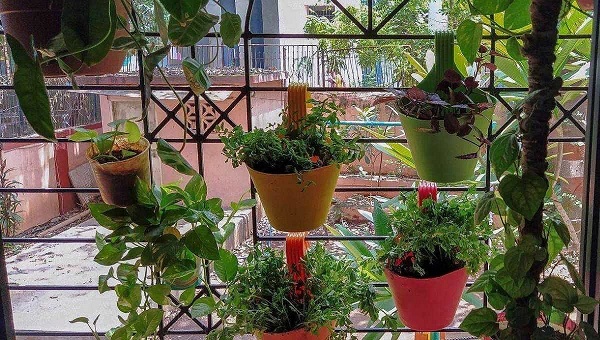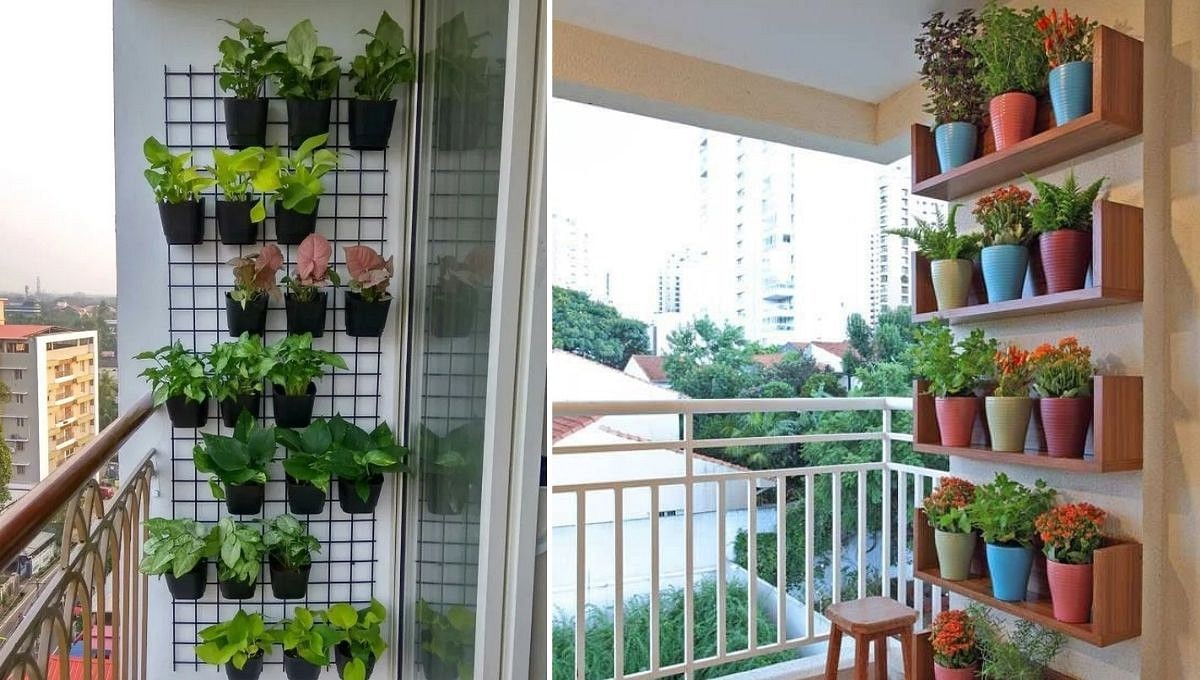It was the French botanist Patrick Blanc who gifted civilised society with the first modern vertical gardens in the 1980s.
Closer home, India’s first vertical garden was spotted on Bengaluru’s Hosur Road flyover in 2017. Since then, multiple public spaces in cities have set up green planters on barren walls, pillars, flyovers and building facades.
The concept of vertical gardening is specially useful in areas with less space, for it works on setting up plants across vertical spaces like walls and grills.
Gardening expert Swati Dwivedi shares that she observed these gardens in Bengaluru and ended up creating one in her own home. If busy spaces such as these can successfully hold thousands of saplings, the walls of one’s house can be decorated with a few pots too.
For the urban gardener wary of filling their home’s walking space with a forest, Swati shares a few ways in which they can go about setting a green wall in their homes.
-
Pots on the grill:
Swati shares that since most homes have grills and railings, hanging pots on them is an easy way to start. The grill on your windows or the railing of your balcony is strong enough to hold pots, which these days come with a hanging hook. The cost of such pots starts at Rs 20 and can go up, depending on your locality and the pot size.
“Use a pot between four to six inches in size, as small pots are lighter in weight,” she advises.

-
Custom-Made frames:
For spaces lacking such elements, Swati suggests getting a frame made from local welders or carpenters. One way to go about this is to get stands of wood made and fix them onto an empty wall. These shelves are suitable for placing slightly heavier pots like ceramic ones. Another option is to get a mesh of iron wire or rods that you can hang your pots on.
“While designing such a frame, keep in mind that each rod is flat, and matches the width of the hooks of your pots,” she says.

In her experience, a basic frame costs between Rs 500 and Rs 1,000.
-
Green Wall Setups Bought Online:
“I bought a readymade structure from Amazon,” Swati says. E-commerce websites offer a variety of assemblable structures that are convenient in their portability.
Costing somewhere between Rs 1,000 and Rs 1,200, they come with a manual that offers instructions on how to set the frame up.

-
Hydroponic system:
Anil Thadani, Founder of Paudhshala, shares that hydroponic farming is another excellent way to plant some greens without taking up too much space in one’s home.
The main tenet of the system is based on water flow. Hydroponic systems are set up by planting seedlings in cups filled with coco peat and compost. All nutrients are given to the plants by water and the potting mix. The system remains lightweight and easily manageable, thus eliminating the use of soil.

“The initial investment in hydroponics is slightly high, running around Rs 320 per square foot. But I still suggest buying a hydroponic setup rather than building one. This is because setting up a system requires expertise, and the slightest inefficiency in the water flow can lead to your plants getting seriously damaged,” he shares.
While these options make it easy to set up a vertical garden, paying attention to its care is just as pertinent.
Patrick Blanc’s designs are a success for his meticulous study of the ideal plants and irrigation systems that work well for such structures.
Quick Tips
- Be Mindful of your plan selection: It is important to be mindful of the plants you select for a vertical garden. “Most gardens that you’ll observe hold plants that need a similar sunlight and water requirement. For example, growing a cactus with a fern is a bad idea for they both require different amounts of water. You want to set up plants that you can uniformly irrigate and set in one place,” Swati says.
- Drought resistant plants are a good way to begin: They require minimum maintenance and can survive without water for a couple of days.
- Weight watching: She suggests, “Prepare a potting mix of coco peat and compost for such plants. These materials are lighter as compared to soil, and will help plants that are hanging off a support.”
- Protect the wall: If you’re setting up a vertical garden on a wall, use a plastic sheet to cover it to check dampness and other damage.
Read this article in Hindi here.
Edited by Yoshita Rao
No comments:
Post a Comment